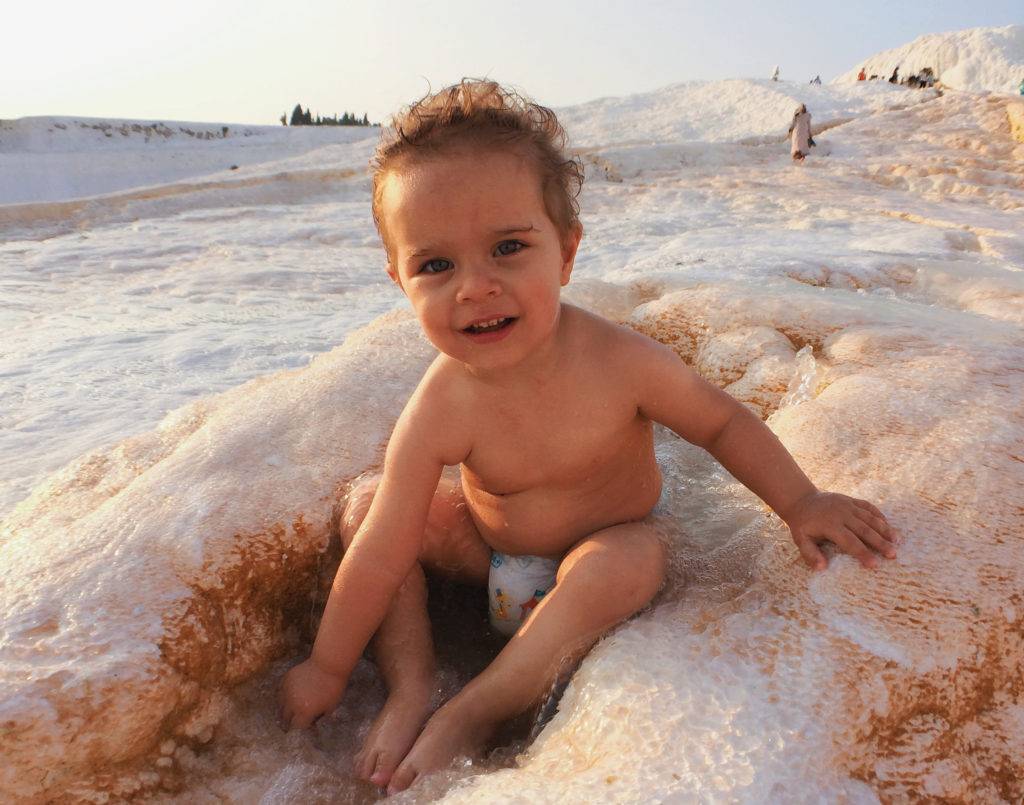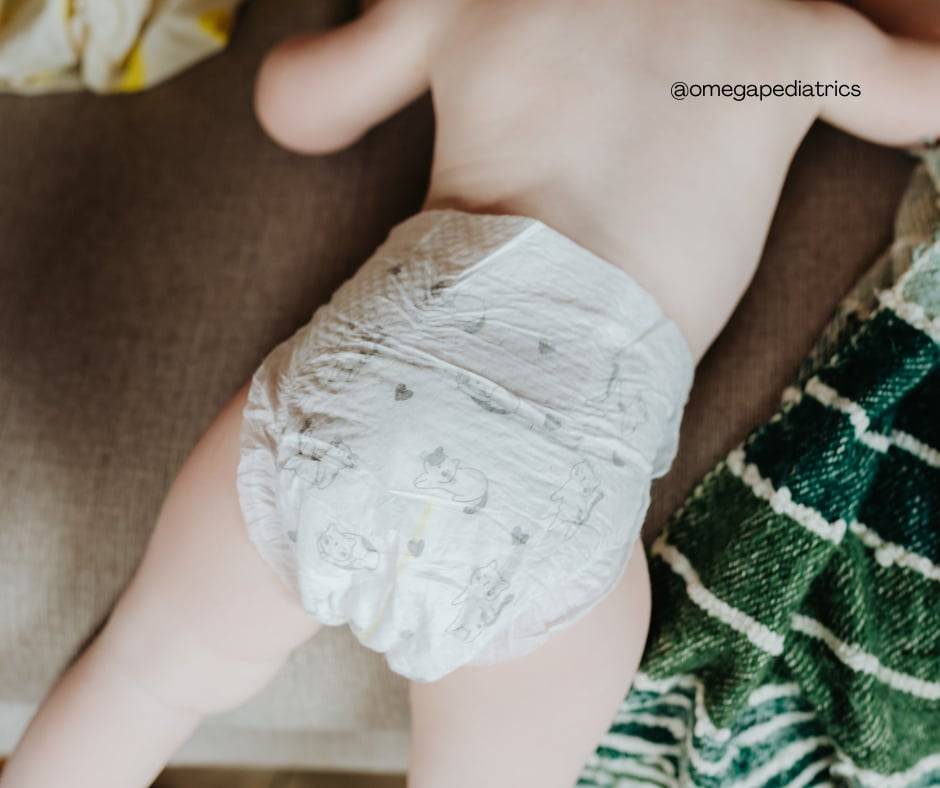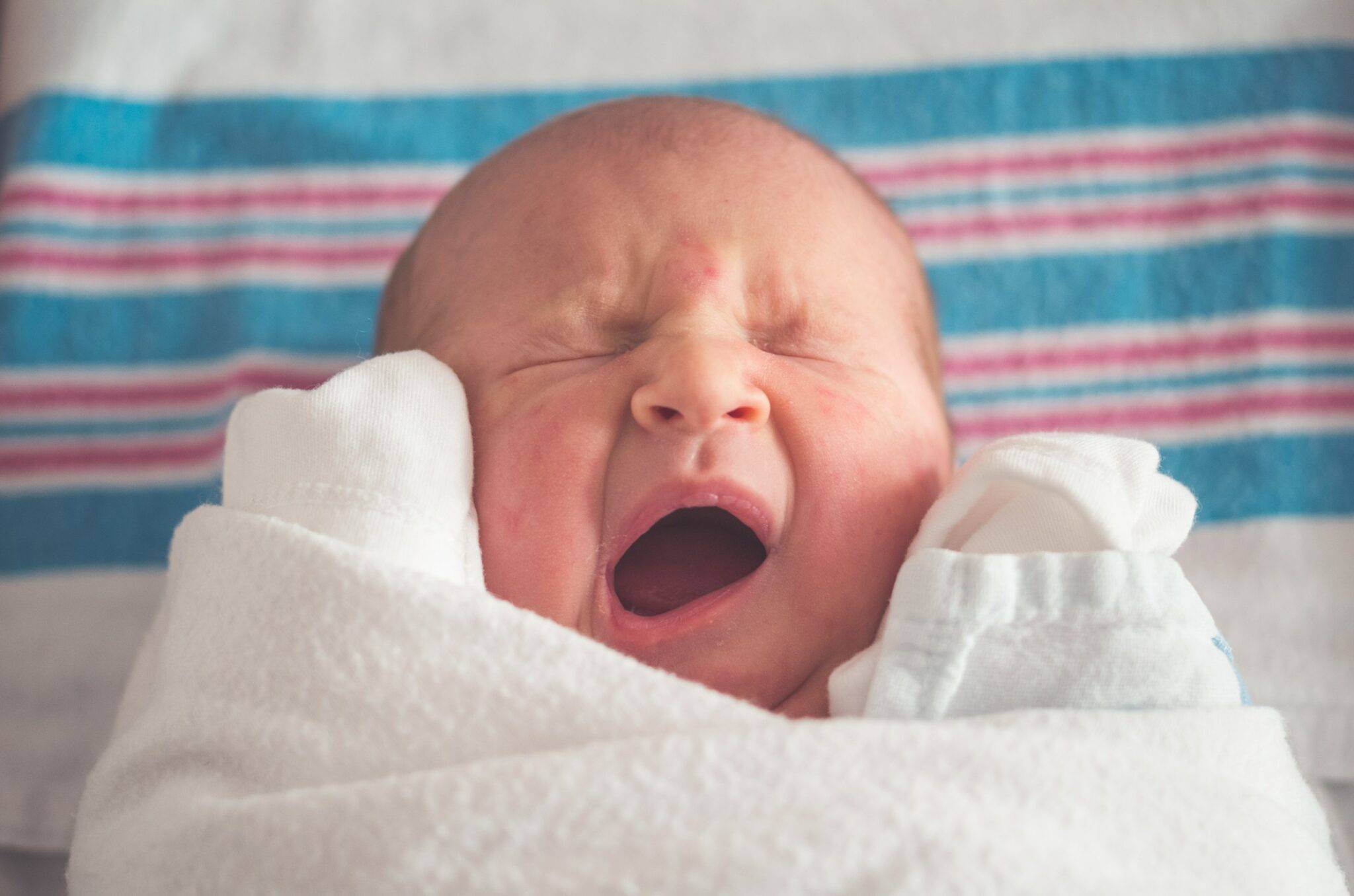Table of Contents
Welcoming a newborn is a joyous occasion. Parents of newborn boys who have opted for circumcision must know the appropriate methods of caring for the circumcision site during the healing phase.
This instructional guide offers a systematic approach to assist parents in looking after their infants following circumcision to ensure a smooth and comfortable recovery.

Understanding Circumcision
The removal of the foreskin from the male genitalia is known as circumcision. It has long been a traditional surgical practice carried out for various cultural, religious, and medical reasons throughout history.
From a religious and cultural perspective, circumcision is significant for many communities. It is commonly practiced in several religions, including Judaism and Islam, where it is seen as a religious obligation and a symbol of identity.
In these contexts, circumcision is performed as a rite of passage, a way to mark a boy’s entrance into manhood, or to establish a religious connection.
Choosing medical circumcision offers various benefits. It includes reducing the chance of potential health issues such as penile cancer, urinary tract infections (UTIs), and sexually transmitted infections.
Research has shown that undergoing circumcision also decreases the risk of acquiring HIV through sexual activity. However, practicing safe sex is still vital, despite circumcision’s protective potential.

After-Circumcision Care Instructions
Learn the initial guidelines for taking care of your newly circumcised baby:
Keep it Clean and Dry
Gently clean the circumcision site with warm water and mild soap. Avoid using any harsh or fragrant soaps, as these may cause irritation. Use a washcloth or cotton ball to gently wipe away any discharge or urine. Pat the area dry with a clean towel or let it air dry.
It is worth noting to keep the surgical site dry at all times after a thorough cleaning, the application of moisturizer, or every diaper change. A wet surface induces bacterial growth and may cause discomfort and further problems for the baby.
Apply Petroleum Jelly
After cleaning, moisturize the circumcision site with either petroleum jelly or antibiotic ointment. This step is important to avoid the diaper adhering to the affected skin area. It is recommended to use a fresh cotton swab while applying the ointment.
Handle with Care
Be gentle when handling your baby, and avoid putting pressure on the circumcision site. Don’t use tight clothing or diapers that may rub against the area. Loose-fitting diapers are recommended during the healing process to minimize friction and promote airflow.
Diaper Changes
During diaper changes, be careful not to disrupt the healing process. Avoid wiping the area excessively and use gentle patting motions instead. Replace the diaper frequently so that the site remains dry and clean.
Monitor for Signs of Infection
It’s essential to monitor the circumcision area for possible signs of infection. If you notice redness, swelling, excessive bleeding, or discharge that resembles pus in any way, it is essential to inform your pediatrician promptly. Additionally, contact our office immediately if you see continuous bleeding or large spots of blood.
These symptoms can indicate that something isn’t healing correctly and may require immediate medical attention. Always err on the side of caution and seek professional advice to ensure the health and well-being of your child.Remember, each baby is unique, and the healing process may differ. If you have any concerns or questions, do not hesitate to reach out to your healthcare provider. With proper care, your baby’s circumcision site should heal well.
Managing Discomfort
Although circumcision is a common surgical procedure, it causes temporary discomfort and requires special attention during the healing process. By following a few key guidelines, you can ensure your baby’s comfort and promote a smooth recovery.
- Gently clean the area with warm water and mild soap. Your healthcare provider recommends antibiotic ointment or petroleum jelly that can be applied to maintain moisture and prevent the dressing from sticking.
Your pediatrician may recommend over-the-counter pain relievers suitable for infants, such as acetaminophen. Follow the recommended dosage instructions.
Further, your physician may also advise the application of a numbing cream or icy gel pack to provide more comfort. Always consult with your healthcare provider before using any pain-relieving products.
- Dress your newborn in loose-fitting clothing made of soft, breathable fabric to avoid unnecessary friction and irritation around the circumcision site. Opt for diapers with a larger size to prevent rubbing against the sensitive area.
If your baby shows signs of discomfort, try soothing techniques like gentle rocking or providing a pacifier.
Lastly, providing plenty of love, care, and attention to the newborn helps promote their overall well-being and comfort during the healing process. Regularly check on your baby, engage in bonding activities, and maintain a calm and soothing environment.
Monitoring Recovery
The medical practitioner who conducted the circumcision will give step-by-step instructions on maintaining the wound and the progress expected while recovering. Abiding by these is critical to encouraging healing and decreasing the probability of any complications.
- After the circumcision, you may notice swelling, redness, and even a small amount of bleeding around the surgical site. These are normal and expected in the initial days following the procedure.
- Keep the area clean and dry to ensure a smooth healing process. Any actions or clothing that could lead to rubbing or increased irritation of the wound should be avoided at all costs.
- To avert infection, change diapers often and avoid letting urine or feces gather on wounds. Apply a layer of petroleum jelly to protect the area from friction caused by the diaper. Consult your healthcare provider before using any creams or ointments.
- Don’t be alarmed if you notice a yellowish-white coating developing on a wound during the healing stage. It’s an expected and natural part of the recovery process. It indicates the formation of a protective scab.
It’s important not to forcibly remove the scab. Doing so disrupts the healing process and increases the risk of infection. The scab will naturally shed as the wound heals.
Maintaining Hygiene
Circumcision is a surgical procedure. Hence, it’s highly important to keep the circumcision site sterile at all times through hygienic practices.
- Keep the circumcision site dry and clean. Apply a thin layer of petroleum jelly or an antibiotic ointment to moisturize the area, thus preventing the formation of scabs. Be cautious not to apply too much since it hinders the healing process.
- During the healing process, you may notice some slight bleeding or yellowish discharge. This is normal and should subside within a few days. Any unusual discharge, such as bleeding or pus, may indicate an infection. Call your doctor immediately.
- Refrain from pulling back the remaining foreskin. It will retract on its own as your baby grows. Manipulating or forcefully retracting the foreskin can cause pain, bleeding, and even complications.
- Lastly, monitor your baby’s condition and general health. If you observe any symptoms of discomfort, fever, or unusual behavior, seek immediate advice from your pediatrician. Additionally, call our office immediately if:
- Your son is bleeding continuously.
- Swelling increases after the third day.
- Your son has not urinated for 24 hours.
- You notice foul-smelling discharge.
- Your son’s temperature is 101°F or greater.
- He appears to be in pain.
- These signs could indicate complications that need prompt medical attention. Your vigilance ensures the best care and swift response to any issues that arise.
When implementing these methods, your infant will undergo a seamless recovery and a significant enhancement in their general health. If any assistance or further information is needed during this phase, feel free to contact your medical practitioner.
Follow-Up Care
To ensure a healthy recovery for your infant following circumcision, follow-up appointments with the medical practitioner should be part of the process. Make it your top priority since this is a critical period for your newborn.
Typically, follow-up appointments with your doctor are scheduled during the first week or two after the circumcision. If you opt to have your baby circumcised at Omega Pediatrics, the pediatrician will give you a written schedule of the follow-up visits.
With a schedule in hand, you will be able to prioritize it amidst the tremendous responsibilities of having a newborn. These visits allow the doctor to properly monitor the healing progress of your baby and address any problems or complications that may arise.
- The circumcision site is assessed for any signs of infection, such as reddening, swelling, or any secretions. Additionally, they may assess the overall condition of the area, which includes the appearance of the incision and the presence of any adhesions.
- Complications, although rare, can occur after circumcision. Your healthcare provider identifies any potential issues early on and provides appropriate interventions if necessary. They also offer guidance and clear up any doubts you may have.
- Be attentive to your baby’s behavior. Excessive crying, fever, or any signs of infection, such as increased redness, swelling, or foul odor from the circumcision site, warrant a doctor’s attention.
By working closely with your healthcare provider, you’re assured that your newborn’s circumcision site heals adequately. Furthermore, your baby will remain healthy and comfortable throughout his recovery.

Your Baby Boy Needs Special Care After Circumcision
Caring for a newborn after circumcision requires extra patience and attention, plus the proper knowledge. By following the guidelines outlined in this article, parents are assured that their baby’s circumcision recovery is safe and normal.
It’s expected that your newborn should not show any discomfort throughout the recovery process. Otherwise, seek advice from your healthcare provider for personalized directions and recommendations tailored to your infant’s requirements.
Entrust your newborn son’s circumcision to Omega Pediatrics. We take pride in our field of expertise in pediatric healthcare, especially newborn circumcision.
We treat our patients with love and compassion. We understand the pain and woes of circumcision, so we ensure that your baby is safe and healthy during recovery.
Giving specific instructions for post-circumcision care is the most important part of our process.
By providing the most adequate care, your little one will get through his circumcision safe and sound.
FAQ
What is circumcision and why is it done?
Circumcision is the surgical removal of the foreskin from the male genitalia, performed for cultural, religious, and medical reasons, including reducing the risk of health issues like penile cancer and urinary tract infections.
What are the initial care instructions for a newly circumcised baby?
Keep the area clean and dry, apply petroleum jelly or antibiotic ointment, handle the baby gently, use loose-fitting clothing and diapers, and monitor for signs of infection.
How can parents manage their newborn’s discomfort after circumcision?
Clean the area gently, apply recommended ointments, administer over-the-counter pain relievers if advised, dress the baby in soft clothing, and use soothing techniques like gentle rocking.
What signs of infection should parents watch for during recovery?
Watch for redness, swelling, excessive bleeding, or pus-like discharge around the circumcision site. Promptly inform the pediatrician if any of these symptoms occur.
Why are follow-up appointments important after circumcision?
Follow-up appointments allow monitoring of healing progress, assessment for complications, intervention if needed, and addressing parental concerns to ensure proper healing and care for the baby.
How Long Does It Take for a Newborn to Recover from Circumcision?
Newborn circumcision recovery typically takes about two weeks. While it might seem daunting to consider any medical procedure for your baby, rest assured that healing from circumcision is generally straightforward.
Quick Recovery Process
Initial Days: In the first few days, you might notice some swelling and redness around the circumcision site. This is normal and part of the healing process.
One Week Mark: By the end of the first week, the swelling should start to reduce significantly, and the area may begin to look better.
Two Weeks: Around the two-week mark, most newborns have healed completely, leaving only a small scar that will fade over time.
Tips for Smooth Healing
To ensure a smooth recovery:
Keep the Area Clean: Gently clean the circumcision site with warm water during diaper changes.
Avoid Tight Diapers: Use loose-fitting diapers to prevent irritation.
Use Ointment: Apply a doctor-recommended ointment to keep the area moist and promote healing.
While the procedure itself may seem overwhelming, the recovery process is usually quick and uneventful, with your newborn feeling much better in no time.
What Medication Care is Recommended After the procedure?
Infant Pain Relief
After a newborn circumcision, managing your baby’s comfort is crucial. Your baby should receive two doses of infant acetaminophen drops. Administer each dose six hours apart. The recommended dose is 1.25 ml, which corresponds to the first line on a standard dropper. Additional doses are not required.
Over-The-Counter Availability
Both the infant acetaminophen drops and the antibiotic ointment can be conveniently purchased over the counter. No prescription is needed for these medications, making them easily accessible for caregivers.
By following these guidelines, you can help ensure a smooth recovery for your newborn after circumcision.
How Long Does It Take for a Newborn to Recover from circumcision?
Newborn circumcision recovery typically takes about two weeks. While it might seem daunting to consider any medical procedure for your baby, rest assured that healing from circumcision is generally straightforward.
Quick Recovery Process
Initial Days: In the first few days, you might notice some swelling and redness around the circumcision site. This is normal and part of the healing process.
One Week Mark: By the end of the first week, the swelling should start to reduce significantly, and the area may begin to look better.
Two Weeks: Around the two-week mark, most newborns have healed completely, leaving only a small scar that will fade over time.
Tips for Smooth Healing
To ensure a smooth recovery:
Keep the Area Clean: Gently clean the site with warm water during diaper changes.
Avoid Tight Diapers: Use loose-fitting diapers to prevent irritation.
Use Ointment: Apply a doctor-recommended ointment to keep the area moist and promote healing.
While the procedure itself may seem overwhelming, the recovery process is usually quick and uneventful, with your newborn feeling much better in no time.
What If I Think My Son Has a Blister on the Circumcision Area?
If you suspect your son has developed a blister on the circumcision site, don’t panic. It’s essential to understand what you’re observing and take the right steps:
1. Identify the Blister:
Blisters can appear as yellow or gray bubbles. These could be from a medication like silver nitrate, used to prevent bleeding during the procedure.
2. Understand the Healing Process:
The area may form a scab that will gradually become dry, hard, and black. This is a normal part of the healing process and should naturally fall off within about two weeks.
3. Keep the Area Clean:
Gently clean the area with warm water and mild, unscented soap. Avoid using rubbing alcohol or hydrogen peroxide as these can be too harsh.
4. Monitor for Signs of Infection:
While some redness and swelling are typical, look out for excessive redness, pus, or a foul odor, which could indicate an infection.
5. Use Appropriate Ointments:
Apply a thin layer of petroleum jelly or any prescribed ointment to the area to prevent friction and promote healing.
6. Seek Medical Advice:
If you’re unsure or the blister doesn’t seem to improve, contact your pediatrician for further guidance. It’s always better to consult a professional if you have any concerns.
By following these steps, you can help ensure your son’s healing process goes smoothly.



